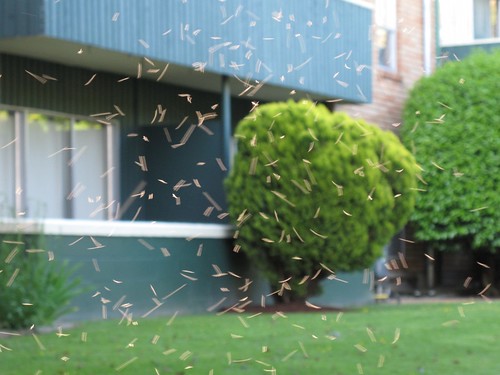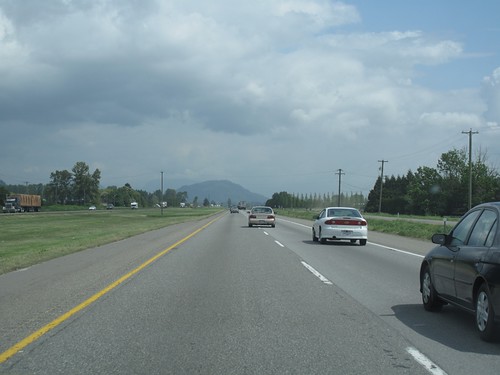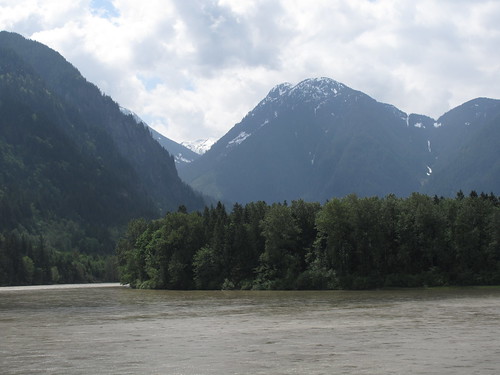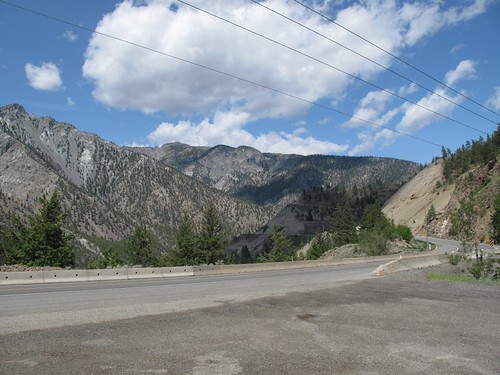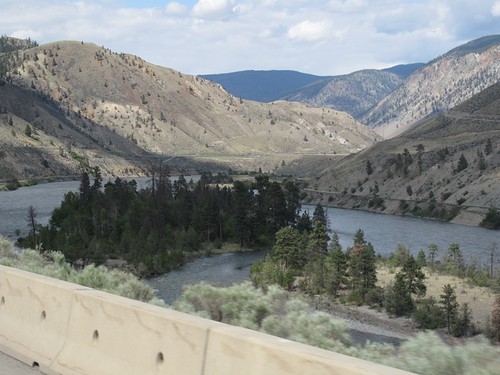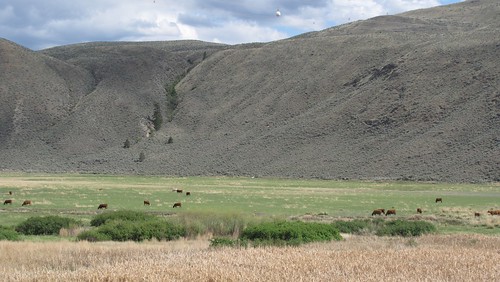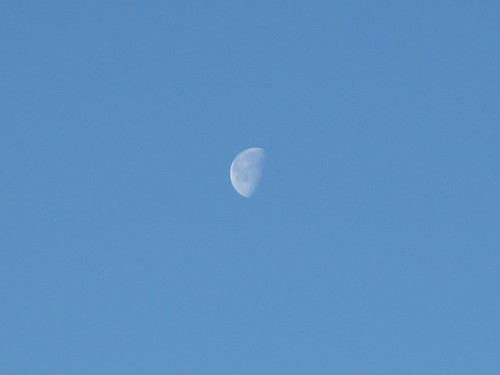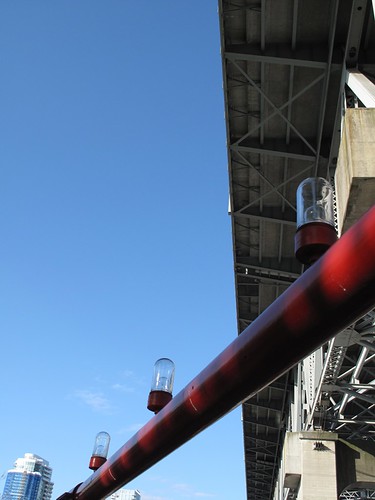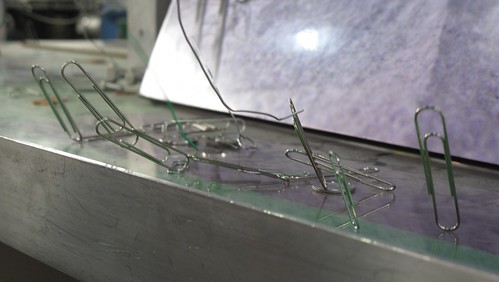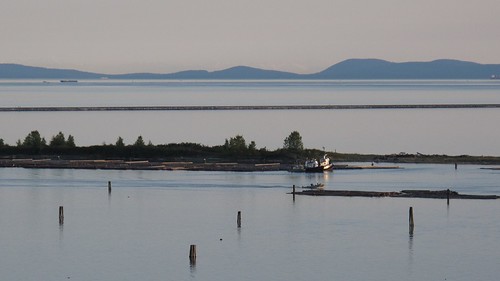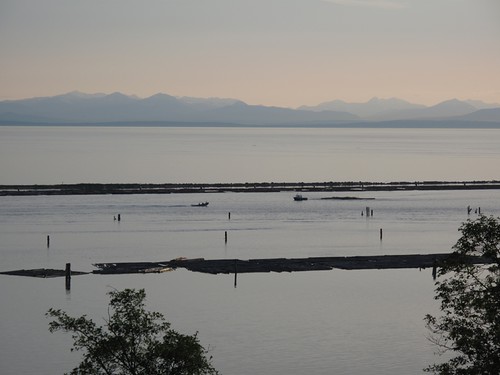Last but not least, a bunch of talks that didn’t easily fit together:
On Friday Martha Rans of Artists Legal Outreach gave us a brief overview of copyright law in Canada, the why and the how. I learned a few interesting things, such as that you can copyright lighting techniques in photography. Subjects like the Eiffel Tower can’t be copyrighted, but composition and lighting can—in Martha’s words, copyright is not about ideas, it’s about expression of ideas.
And there’s the basics, which still bear repeating: the Web is not public domain. You don’t get to use stuff without attribution or permission. And money is not the issue. Most artists and creators would be perfectly happy with a “This is great! Can I use it if I attribute to you / link back / whatever?” Likewise, creators need to make it easy for people to do this. A “If you like my work, get in touch with me!” message on your blog may prevent people from just lifting your stuff.
This was followed by Jon Newton talking about the defamation case against his old site, p2pnet.net, about which more here. It wasn’t a long talk; Newton isn’t a public speaker, and the merits of the decision were so blindingly self-evident that there wasn’t much point to a Q&A period.
Next, Photocamp! John Biehler gave a little demonstration of light painting (well, not an actual demonstration, though he did have the gizmo in question with him).
Ariane Colebrander gave us some tips on accessories: not lenses or tripods or such, but the bags and packs that you lug it all around in.
Morten Rand-Hendriksen taught us (1) how to shake hands like the Vikings of old, and (2) a few techniques to efficiently blog your photos and publicize them on social networks. He demoed a cool plugin (whose name I forget) that allows you to post your photos on Facebook at the same time as you’re posting them to your blog. Choose the featured image for your post, and it’ll show in the preview in your timeline. You can tag your friends or other pages. Probably lots of other nifty features. This wasn’t directly useful to me since I post my photos on Flickr. Still, a little more SEO wouldn’t hurt…
Syx Langemann gave us a brief tutorial on portrait photography: how to watch out for visual noise, how to use lighting, and most of all that you should respect your subject. “We owe it to the person in front of the camera to create a beautiful & powerful photo.” The story of his great-uncle was especially moving and memorable.
And I don’t remember if it was Morten or Syx who gave us the addresses of a couple of photography blogs. Nevertheless, here they are:
Vivian Meier, a stupendously talented photographer who never showed her work to anyone and only became famous after her death.
yowayowa camera, the blog of a Japanese girl who does “levitation” photography. It’s strange, a little eerie, and absolutely brilliant.
Kemp Edmonds talked to us about lifelong learning. This is about the point that my laptop died, but fortunately I jotted down a few notes on my phone. Very incomplete, but better than nothing, especially since the link I have to his presentation doesn’t seem to work.
Anyway: the key to self-directed lifelong learning is in 6 steps:
- Decide what you wat to learn (it has to be something you’ll be passionate about)
- Discover your tools: podcasts, videos, lynda.com, Google Scholar, TED, were some of the ideas thrown out by the audience. I loved that Kemp actively encouraged audience participation; in fact, near the beginning of his talk he said something something about looking forward to learning from us. Great attitude!
- Find, filter and evaluate all those tools
- Who will you learn from? (My notes here mention “the hierarchy of contagiousness”)
- Select your method of experimentation. For example, to be a better photographer, post to Flickr and solicit feedback. For me, that would be blogging to hone my voice, and develop themes and plugins to share
- Who will you teach? Everybody knows one of the best ways to learn is to teach!
Quote of the day: “You don’t have to know everything, you just have to know that you don’t know everything.”
So, there you go, that was Northern Voice 2012. The quality of speakers was top-notch, I had a great time and learned a lot! Can’t wait for next year!

